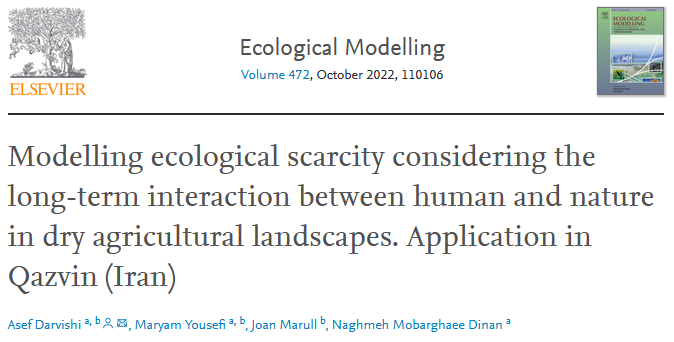Darvishi, A., Yousefi, M., Marull, J. et al. 2022. “Modelling ecological scarcity considering the long-term interaction between human and nature in dry agricultural landscapes. Application in Qazvin (Iran)”. Ecological Modelling 479: 110106.
Land Use and Cover Change (LUCC) is a pervasive driver of today’s global socioecological crisis. In light of the LUCC in many agricultural landscapes worldwide, natural resource conservation is critical. Put-aside dry agricultural landscapes have significant limitations when attempting to guarantee long-term food production and other ecosystem services in ecological scarcity conditions under climate change scenarios. In this research, an Intermediate Disturbance-Complexity (IDC) model was applied to evaluate how ecological scarcity in NW Iran can be affected by anthropogenic disturbance and landscape complexity. This model calculates both the behaviour of the Human Appropriation of Net Primary Production (HANPP), a proxy of the amount of anthropic disturbance, and a Landscape Ecology (Le) metric, which measures complexity as a heterogeneous and well-connected land matrix. HANPP results show how dry pastures are affected by human pressure, while the results for Le indicate how human activities are affecting ecological corridors linking the northern and the southern parts of the study area. Finally, IDC results show that intermediate disturbance can have a positive effect on the provision of human needs and, at the same time, can help maintain the landscape’s ecological functionality. The analysis confirms that land use policies should consider the landscape as a whole and should avoid applying a string of ad hoc decisions to minor pieces of the territory. Our findings support the view that a strong relationship between intermediate disturbance and landscape complexity exists, which highlights the importance of traditional economic activities as ways of maintaining biocultural landscapes.

